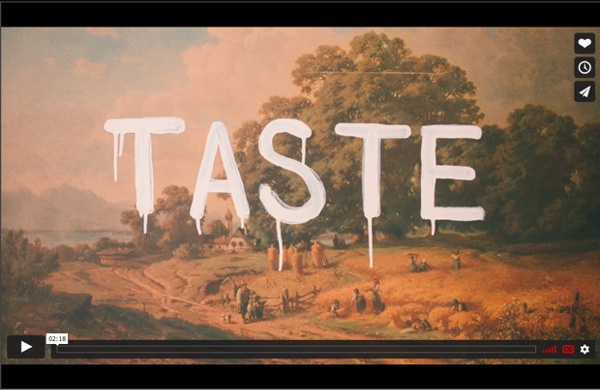



The $200 Los Angeles Bike Ride Music Video This is a Guest Post by Nick Roberts of “And the Giraffe” A short introduction about myself: My name is Nick Roberts and I play in a band called “And the Giraffe” based out of Nashville, TN. A few months ago, after putting out our second album, we decided to shoot a music video to support the single from the record. A friend of mine, Harrison Sanborn, lives and works out of Los Angeles and has been our go-to director/cinematographer for our music videos in the past, so there wasn’t any question that we were going to work with him for this project as well. Given that we’re an independent band, our budgets for just about all creative projects may as well look like we found loose change in our couch. We had about $200-$250 to spend on making a music video when we went out to visit Harrison in LA for a week, and we definitely put it to good use.
What to do when nobody notices you: the power of the ‘300 Rule.’ An hour later… Three measly likes and a comment from a stalker. What happened? Doesn’t the world appreciate quality art/tweets/photography/film-making/writing anymore? Online guru guy said create GREAT content. That’s precisely what you did. Shoot 1,540 Glorious FPS at 1080p with the New Phantom Miro LC320S High-Speed Camera It's almost not funny now -- it seems like every few days a new camera is introduced (or at least rumored). Vision Research, the company famous for its high-speed cameras, has introduced a new model in its lower-priced (considering) and smaller-sized Miro line, the easy-to-remember LC320S. For starters, it can record up to 1,540fps at 1080p, which is nothing short of astounding if you've ever seen it on a large screen. It's quite a different experience seeing 240fps at 1080p with the Sony FS700 and then seeing Phantom footage at over 1,000fps (or more). Mitch Gross over at AbelCine has a very nice introduction video we've embedded below. Here are some of the basic specs:
The Painful Truth About Filmmaking No One Tells You When You're Just Starting Out YouTuber and independent filmmaker Darious Britt is back, this time with some hard truths about independent filmmaking that are sure to be painful to hear for anybody just starting with making their own films. Despite the bleak outlook, this video is one of the most inspiring things you'll see this week. Take a look. The painful truth is this: filmmaking -- particularly the independent variety -- is an uphill battle, and that's putting it mildly. For most of us, every step along the way will be fraught with unforeseen obstacles, most of which we won't have the proper time, money, or physical resources to solve. Everyone is a designer. Get over it. Recently, Jared Spool caught my attention with an article about how Netflix’s performance engineers are actually designers. It’s a provocative idea, but it makes sense. His argument is that everyone in your organization (including performance engineers) designs the product, not just the people with “design” in their job titles. From some of the reactions, you might think Jared had kidnapped a baby for ritual sacrifice.
Comments Arguably the most articulate human being the world has seen. He shares a very important message, while doing so in a way that provokes both our inner thought processes and a hidden love for poetry. Good man! Great message! Sri Pavan Sunnam Evolving Coursera’s Brand Identity Today, we’re excited to share Coursera’s new brand identity, a reflection of our commitment to make transformative learning accessible, inclusive, and impactful for all. As we continue to serve our global community of learners, partners, and customers, our new identity expresses the power and potential of every learner—and every learning opportunity—on Coursera. Learning has the power to positively transform our world.
Hue Are You? What Color Can Mean for Your Nonprofit Marketing Strategy - Clairification What emotions align with your nonprofit mission and brand identity? I adore color. I’m definitely not someone who wears only black! My personal ‘brand’ is multi-hued. A Designer’s Code of Ethics. A designer is first and foremost a… When you decide who you’re designing for, you’re making an implicit statement about who you’re not designing for. For years we referred to people who weren’t crucial to our products’ success as “edge cases”. We were marginalizing people.